► Modern Peugeot design decoded
► Up close with the latest concept cars
► Which features will make production, which won’t
Designers are always telling us their concept cars provide all the clues as to what the next generation of production cars will look like – all we have to do is read them properly. But it helps if they’re on hand to give us a few extra pointers.
We’ve just spent a day up close with two of Peugeot’s most important recent show cars, the Quartz crossover and Exalt luxury saloon, and two of the firm’s senior designers, Pierre-Paul Mattei and Sylvain Henry, to decode which bits we’ll see on the production Pugs of tomorrow – and which will be left on the cutting room floor.
1) ‘Diagonal splits’ are here to stay
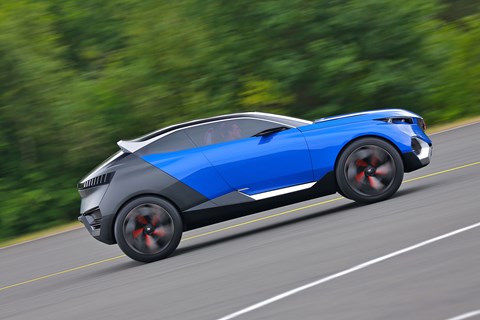
Peugeot’s design department is dead set on the ‘Coupe Franche’ (French for ‘straight cut’) split colour scheme, first seen on the 2012 Onyx supercar concept. On the Onyx the purpose was to show off the car’s contrasting body materials of copper and carbonfibre, but the slanted colour break has since reappeared on both the Exalt and Quartz concepts – and, memorably, the baboon-bottomed 208 GTi 30th production hot hatch.
Mattei and Henry tell us that diagonal split will be incorporated into future production models, but treated as a construction line of the car rather than as a pure colour break.
‘Coupe Franche can be an identity,’ Pierre-Paul Mattei told CAR. ‘Coupe Franche was actually part of the design brief for Exalt and Quartz. And it has become part of the design brief from the start [of the new cars Peugeot’s design team are currently working on]. We will adapt the straight cut to the intention of the car.’
Expect their treatment to be more subtle than that of the 208 GTi 30th, however. They’ll achieve the diagonal intersection not necessarily using colour change, but by shutline and surface trickery.
2) Sharpness and softness
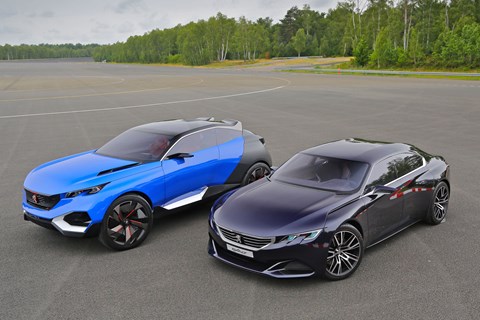
‘Look at the Quartz concept [above left] and at first glance it looks very sharp,’ says Mattei. ‘The first impression is of sharpness, but actually the surfaces are very soft, very smooth and clean. That mix between softness and sharp lines, that’s the trend, the direction for future Peugeots.’
Mattei tells us the kind of clean, unadorned body surfaces seen on the Exalt and Quartz are here to stay, with chiselled features such as the lights, grilles and exhaust housings acting as an angular counterpoint.
Achieving that mix between sharp and soft isn’t easy, though. ‘In the beginning the Quartz was too sharp. Then it was too smooth. It’s a fine balance.’
3) Small steering wheels, high instruments
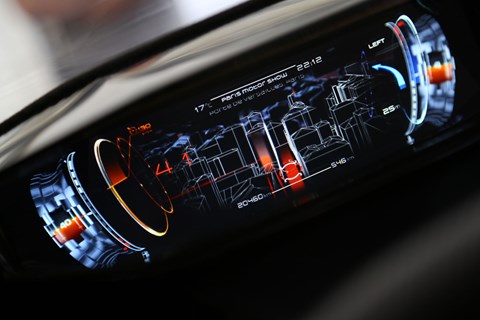
As we’ve detailed in a separate story, the small wheel/high instruments set-up first introduced on the 208 will continue to be rolled out across future production Peugeots. Both the Exalt and the Quartz develop the theme further, with a deeper, 3D-effect instrument panel projecting graphics onto a polycarbonate strip and a wider, quartic steering wheel design. Expect to see digital instrument displays on the next batch of production cars; rectangular steering wheels, not necessarily.
‘We can manage this triptych [of steering wheel, instruments and touchscreen] in different ways, depending on if it’s a sports car, a sedan, a hatchback and so on. From 208 to 308, for example, the feeling is very different,’ explains Mattei.
4) Intricate grille treatments
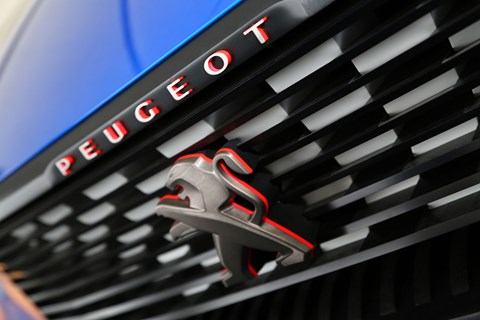
That both Exalt and Quartz sport a forward-slanting, overhanging grille isn’t a coincidence. The Quartz in particular features a complex-looking chequered pattern designed to confuse the eye.
‘The shape of the grille changes as you move around,’ Henry tells CAR magazine. ‘You don’t know if it’s curved or flat – that’s the intention.’ That particular grille treatment’s also been mapped across to the recent 308 R Hybrid hyper-hatch concept.
5) A posher kind of Peugeot
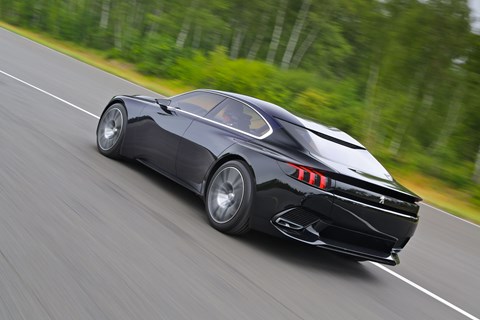
PSA top brass still has a grand plan to turn people’s perceptions of Peugeot from a maker of middle-road everyday fare to more of an upmarket, aspirational kind of brand. It’s an ambitious strategy, and no easy task. How can the designers help?
‘With materials, with surfacing,’ claims Mattei. ‘From the beginning of the Exalt project there was a lot of discussion about materials, and their treatment. We use concept cars as laboratories for a lot of things. Not just design but materials and ergonomics.’
The Exalt’s interior in particular turns to the world of tailoring to inspire its upholstery treatment, and adopts interior surfaces that are as smooth and uncluttered as possible – a theme that will continue. Its innovative use of recycled newspaper to trim the dashboard, however, isn’t possible for production just yet although ‘we’re working on it’, says Mattei.
And which bits won’t make it to production Peugeots?
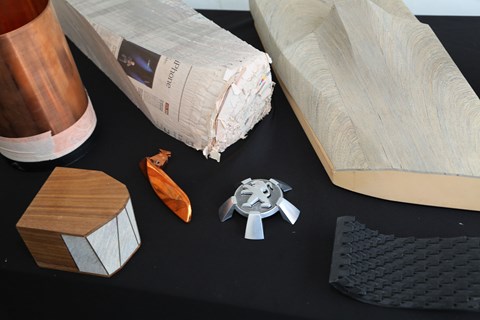
Durability is the main barrier in the way of the recycled paper trim (above), and it’s the same story for the Exalt’s ‘sharkskin’ textured rear bodywork coating, which is said to reduce aerodynamic turbulence at speed.
Frequency regulations prevent the Exalt’s CSI-style darklight headlamps from becoming a production reality for now. They’re designed to pick out road markings more easily in cities blighted by smog such as Shanghai, or simply at dusk (‘in French we call that time of the evening “dogs or wolf”’, says Henry, ‘because you don’t know if it’s a dog or a wolf!’). Swapping door mirrors for cameras, as so many concepts do, may well happen in the near future, adds Mattei, but ‘it’s a matter of cost.’
And while organic OLED lighting tech is the talk of design town, because ‘you can design whatever you want’, Mattei points out that ‘regulations don’t [currently] allow you to do that – you end up with shapes more achievable with normal LEDs. OLEDs’ advantages over normal LEDs are only slight for their cost.’
There’s form here – remember the Peugeot SR1?
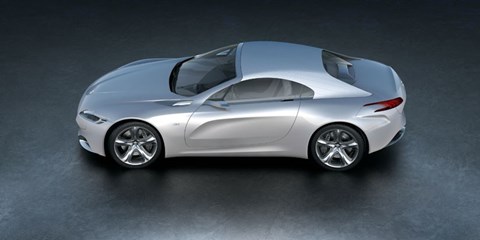
Mattei describes the 2010 SR1 concept as a ‘design manifesto.’ It previewed the 208’s hatchback’s grille, and the three-door version’s scalloped sides – which incidentally were designed after the SR1’s debut.
‘They were directly connected’ says Mattei. ‘We have a lot of codes. Each can be adapted to the car. But ‘for the end result’ we want to say it’s definitely a Peugeot – and not just because there’s a lion on the front.’
Do you think Peugeot design is headed in the right direction? Tell us in the comments below!